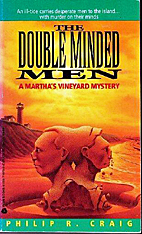REVIEWED BY DAN STUMPF:

THE WHITE REINDEER, Finland, 1952. Original title: Valkoinen peura. Mirjami Kuosmanen and Kalervo Nissila. Written by Erik Blomberg and Mirjami Kuosmanen. Directed by Erik Blomberg.
Since Writer/Director Blomberg and Writer/Leading-Lady Kuosmanen were married, this is obviously a family project. It’s also quite a memorable film: Not a horror movie (though it’s listed in Phil Hardy’s Encyclopedia) as much as a grim fairy tale or a spooky folk song.
I should say for starters that this is set in contemporary Lapland, the northernmost part of Finland, and though there are villages with substantial houses, everyone seems to spend most of their time in smallish tents or huts (Yerts, maybe?) out in the frozen wilderness, catching and herding reindeer, or whatever people used to do before there was Cable TV.

The film opens with a mysterious woman staggering out of the snowy wastes and into a hut where she dies and gives birth to a baby, which is cared for by the locals, who name her Pirita, and she grows up a scene or two later into Ms. Kuosmanen. And as you’re probably unfamiliar with this actress, I’ll just say she is devastatingly beautiful, with one of those radiant complexions that seem crafted to show off large haunting eyes and a sensuous mouth.
Pirita marries Aslak, a local hunter (played by Kalervo Nissila, a Kent Smith type), but when he goes off hunting after the honeymoon, she gets into a snit and goes to visit the local shaman for a love potion that will make her irresistible.

What follows is a beautifully-done scene, murky and moody, as the Shaman does his medicine-show-magic, gives Pirita the usual potions and instructions on the proper rites… and then discovers what Pirita didn’t now herself: she’s a witch!
Too late it seems. There follows another creepy scene or two as Pirita performs the rites in front of one of the most imposing totems I’ve ever seen in the movies (and needless to say, with the kind of flicks I watch, I’ve seen a totem or two in my day….) and finds she can transform herself at will into the eponymous white reindeer, pursued by one hunter after another (i.e. irresistible to men!) but when they catch her she transforms again and kills them — just how is never shown, but she’s suddenly sporting a set of very sharp teeth.

Visually, this film is simply stunning, shot almost entirely outdoors in one of the most haunting landscapes on earth, with epic shots of vast snowy landscapes dotted with scraggly trees, ribboned with migrating herds of reindeer, miles long, shifting and curling about the countryside. We get breathtaking scenes of the principals racing around on skis or reindeer-pulled toboggans, and eerie night-time tableaus with the snowscapes bathed in eerie moonlight as everyone’s breath turns into clouds of evanescent mist.
And then there’s Ms. Kuosmanen, sometimes glowing and beautiful in the classic Hollywood tradition, and other times… well let’s just say that when the killing mood is on her she can produce the kind of predatory smile we wouldn’t see again till Barbara Steele turned up in Black Sunday.

Indeed, the only real letdown here is the final chase, as Aslak her husband chases down the White Reindeer, with a conclusion straight out of some old and plaintive ballad. The chase itself is done in a surprisingly flat and objective manner and just fails to generate the emotion it should.
That’s a minor carp though. It’s a film I’ll remember, a film I’ll watch again, and as I finished it, it occurred to me that with the oppressive landscapes and Ms. Kuosmanen’s striking beauty, you could call it Bergmanesque: Ingmar or Ingrid, take your pick.
